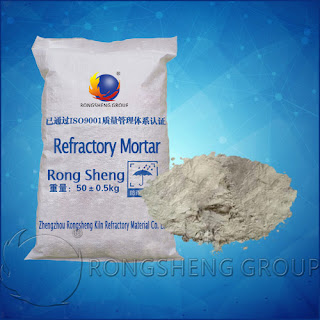Recycling of Some Waste Refractory Materials
In general, most of the treatment methods for waste bricks in the production process of refractory manufacturers and old refractory bricks dismantled by steel mills are piled on one side. In this way, it will occupy the place and pollute the environment. In recent years, the recycling of waste refractory materials has attracted much attention. One problem that cannot be ignored is that there are many types of refractory materials. In the steel industry alone, there are more than 100 types of waste refractory materials. How to make better use of waste refractory materials? First, the chemical composition of the refractory materials must be classified, and then the corresponding treatment.
The specific operations are as follows:
(1) Waste high alumina bricks (including mullite bricks and corundum bricks)
Waste high-alumina bricks can be processed into fine powder for the production of refractory mortar. Particulate materials can be used in the production of various high-alumina refractory castables and plastics refractory whose use temperature does not exceed 1400℃, such as castables for ladle cover and various repairable refractory plastics. It can also produce saggers for environmental protection porcelain.
 |
| Refractory Mortar |
(2) Waste lightweight bricks
They can be used to produce light-weight refractory castables and light-weight insulating refractory mortar powder.
 |
| Light-weight Insulating Refractory Bricks |
(3) Waste lining made of refractory castable lining
The waste lining made of refractory castables with corundum, mullite, silicon carbide, spinel, etc. as the aggregate, and various levels of residual lining granules obtained by crushing. After the iron removal treatment, it can be directly used to produce refractory ramming mass materials and refractory castable materials for comprehensive furnace construction. For example, in the production of large trench ramming mass materials, the residual lining of the blast furnace main trench castable material is added, and the addition amount is 70%.
 |
| Mullite Castable |
(4) Waste magnesia carbon brick
The recovered waste magnesia carbon bricks can all be recycled and reused. It can be added to the mixture of magnesia carbon bricks used in the free surface of the ladle slag line, and the proportion is 30%-50%. All properties of waste magnesia carbon bricks recovered before and after utilization are greater than the standard indicators. Therefore, the recycling of waste magnesia carbon bricks is completely feasible.
 |
| Magnesia Carbon Bricks for Ladles |
(5) Waste aluminum-magnesium carbon brick
Waste aluminum-magnesium-carbon bricks can be added in an appropriate amount when producing aluminum-magnesium-carbon bricks of the same material. And it can crush waste aluminum-magnesium-carbon bricks into fine powder to produce refractory mortar of the same material, which is used to build aluminum-magnesium-carbon bricks.
(6) Waste aluminum-silicon carbide brick
The waste aluminum-silicon carbide brick is always broken into fine powder to produce refractory mortar of the same material, which is used to build aluminum-silicon carbide brick. The crushed granular material can also be used in part to produce aluminum-silicon carbide amorphous refractory materials, such as slag ditch castable material, slag ditch ramming mass material, slag iron ditch cover, etc. used in front of the blast furnace.
(7) Waste magnesia brick, magnesia chrome brick
After the waste magnesium bricks and magnesia chrome bricks are crushed, they are appropriately added to the raw materials for the production of magnesium bricks and magnesia chrome bricks. It can also be properly added to the raw materials of magnesia slag weir plates. And can be processed into fine powder for the production of refractory mortar.
(8) Waste ceramics, electric porcelain
Adding waste ceramics to refractory materials can improve wear resistance and thermal shock stability while reducing material costs and environmental pollution. As a result, aluminum-silicon castables can be developed for use in working environments with operating temperatures below 1100°C.
More refractory materials for the industrial furnaces: http://www.aluminabricks.com/



评论
发表评论